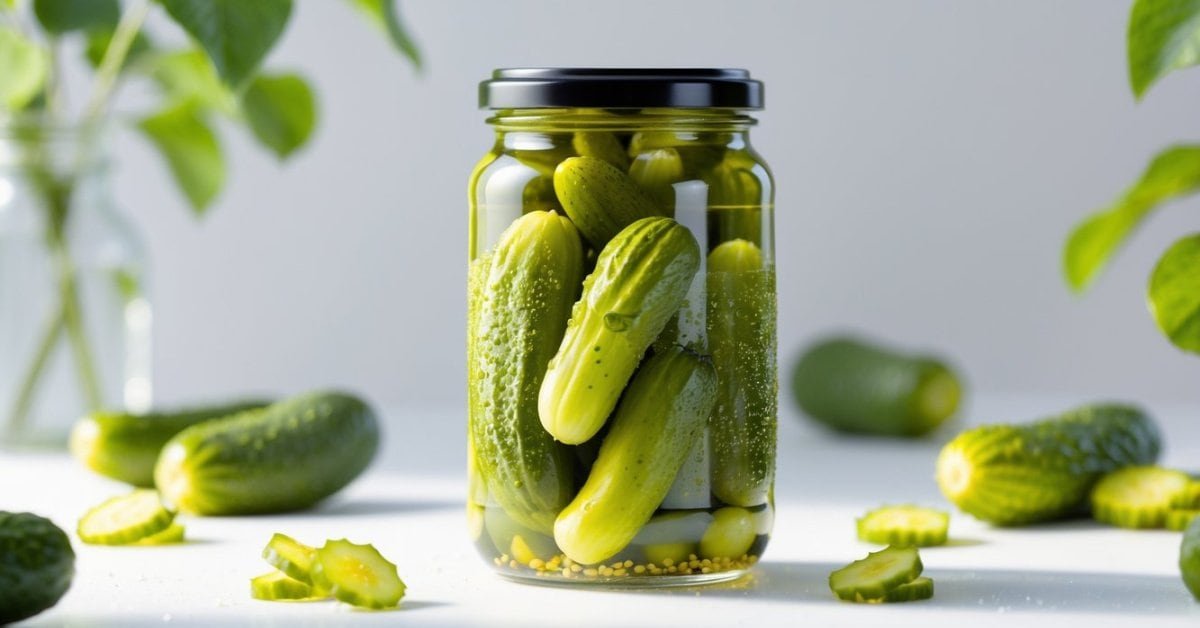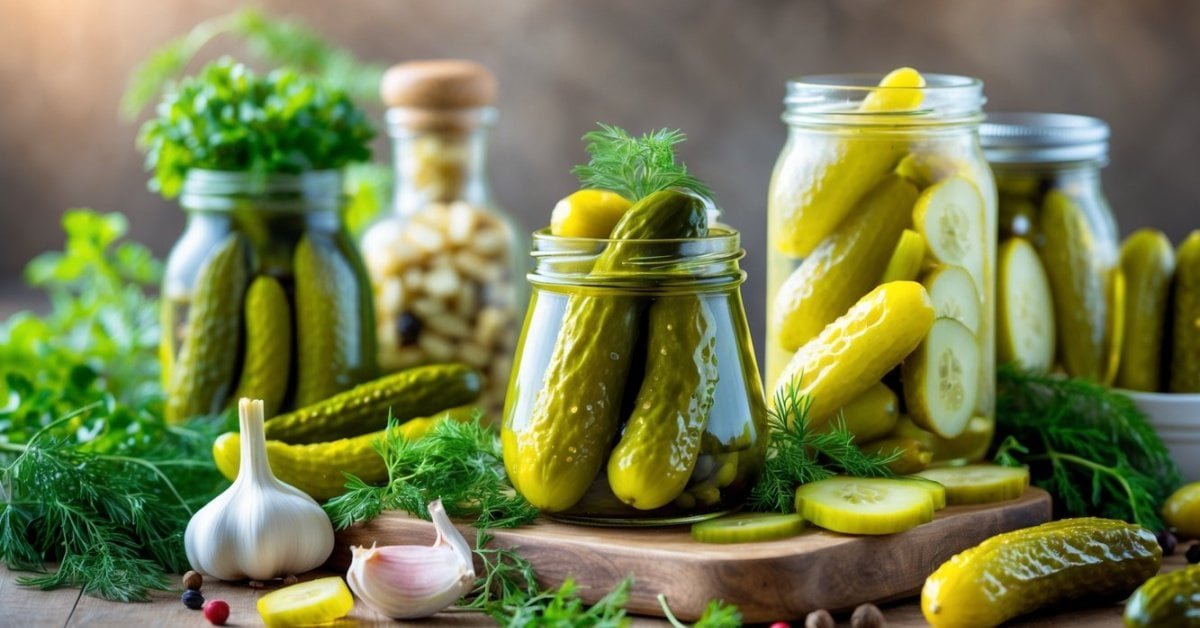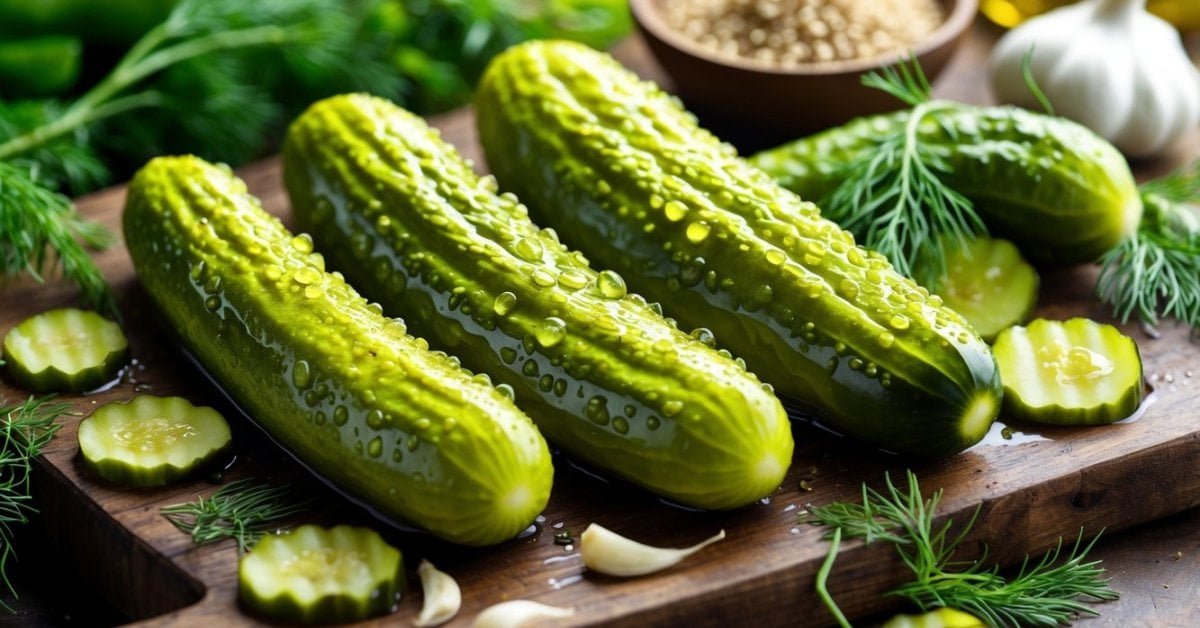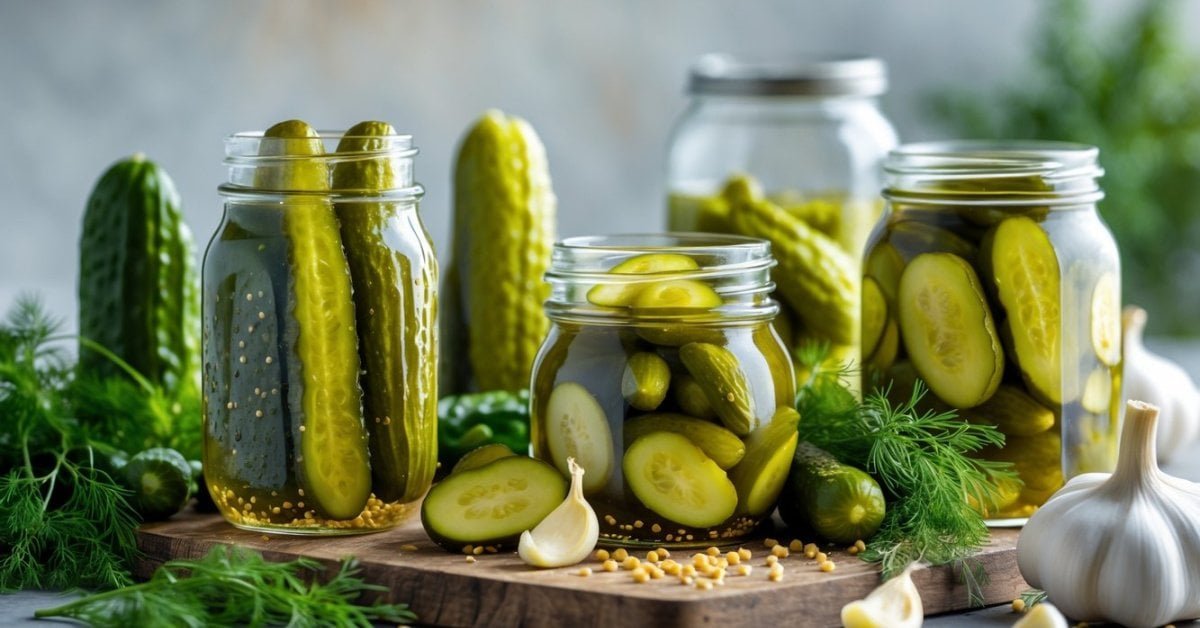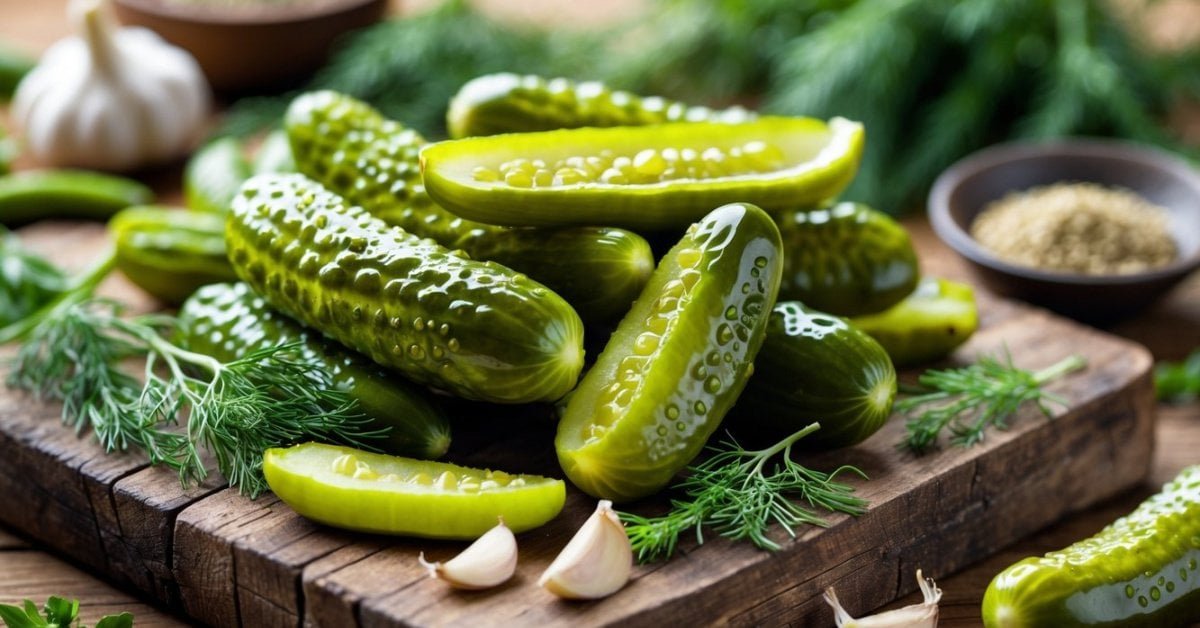I’ve always loved experimenting in my kitchen and nothing excites me more than blending unexpected flavors. That’s how I stumbled upon the idea of combining the tangy punch of pickles with the comforting chew of sourdough bread. It sounded a little wild at first but I couldn’t resist giving it a try.
The result? A loaf that’s both familiar and surprising with a zesty twist in every bite. If you’re a fan of sourdough and crave something a bit different this pickle-infused sourdough bread might just become your new obsession. Let’s dive into a baking adventure that’ll wake up your taste buds.
What Makes Pickle-Infused Sourdough Bread Unique
Brining sourdough with pickles and pickle brine creates a flavor profile I rarely find in traditional recipes. Fermented cucumbers, garlic, and dill contribute lactic tang, herbal notes, and depth that blend seamlessly with sourdough’s own acidic, complex base. My pickled vegetables—like sliced cucumbers, carrots, or jalapeños—add bursts of texture and subtle crunch in each slice.
Using garden-harvested ingredients lets me control salt, spice, and fermentation, guaranteeing both sustainability and flavor consistency. Including pickle brine instead of water in the dough transforms it—sourdough’s normal tang is heightened, and each bite offers faint echoes of the pickling spices I love layering into my jars.
Pickle-infused sourdough stands out because it highlights preservation and fermentation skills. I connect my passion for homegrown produce with every loaf; each component is either grown, pickled, or baked by me—making the bread a direct extension of my self-sustainable kitchen. Pickling expertise shapes every step, from selecting the brine to folding in pickled chunks, making every bake an expression of diverse, garden-fresh flavor.
Essential Ingredients and Tools
Pickle-infused sourdough uses select ingredients and tools that capture the vibrant character of homemade pickles and artisan bread. My choices reflect years of pickling, gardening, and creating self-sustaining culinary routines in my kitchen.
Key Ingredients for Pickle-Infused Sourdough
- Active sourdough starter: I maintain a lively starter refreshed with whole grain flour for strong fermentation.
- Bread flour: I prefer unbleached varieties for structure and crumb, sourced from local mills when possible.
- Pickle brine: I use tart, garlicky cucumber brine from my garden harvests. Brine with dill seeds and black peppercorns deepens the bread’s flavor complexity.
- Chopped pickles: I dice my lacto-fermented cucumbers for bursts of texture, though pickled garlic or jalapeños work for more zing.
- Salt: I rely on unrefined sea salt to keep minerals and brighten flavors.
- Sugar, honey, or barley malt (optional): I blend in a modest amount from my pantry for browning and flavor balance.
- Fresh dill or caraway seeds (optional): I fold in home-grown dill or caraway sometimes for herbal aroma.
Recommended Kitchen Tools
- Digital scale: I measure flour, brine, and starter accurately for consistent hydration and fermentation.
- Mixing bowls: I use stainless steel or glass bowls to prevent sourdough acid and brine from reacting with metal.
- Danish dough whisk or sturdy spatula: I reach for these tools to ensure thorough mixing of sticky dough with chunky pickle bits.
- Bench scraper: I move, shape, and portion the dough easily during folds and transfer.
- Banneton basket or bowl with clean towel: I proof loaves in linen-lined baskets for a defined shape and breathable rise.
- Dutch oven or baking stone: I bake loaves in cast iron for an even crust, trapping steam for oven spring.
- Sharp paring knife or bread lame: I score loaves just before baking for controlled expansion and rustic appearance.
These ingredients and tools help me infuse sourdough with tang and garden-fresh crunch, all from a foundation of sustainable, homemade pickles.
Step-by-Step Pickle-Infused Sourdough Bread Recipe
I use pickle science and sourdough method to blend tang, crunch, and garden freshness in every slice. Each step pulls techniques from traditional pickling and bread making to highlight the unique spectrum of brined flavors.
Preparing the Sourdough Starter
I refresh my sourdough starter at least 6 hours before mixing, using unbleached bread flour and filtered water to maintain its active, bubbly state. For deeper tang, I sometimes swap half the water for pickle brine, which introduces more lactobacillus cultures and a boost of acidity. I use a ratio of one part starter, two parts flour, and two parts liquid. I let it sit covered at room temperature until doubled—a clear sign the starter’s strong enough to raise the dough.
Mixing in the Pickle Flavor
I combine 500g bread flour, 325g pickle brine, 100g refreshed starter, and 10g unrefined sea salt in a large bowl. I chop 100g of my homemade half-sour pickles and add 5g of chopped fresh dill, then fold them in after the first mix. I use a Danish dough whisk for even distribution. I incorporate the pickles after the flour’s hydrated, which prevents their moisture and acid from interfering with gluten development. If I’m using spicy or garlic-heavy pickles, I reduce salt by about 10% to avoid overpowering the dough.
Shaping, Proofing, and Baking Tips
I rest the dough for 30 minutes, then perform three stretch-and-folds at 30-minute intervals. After the final fold, I add a quick bench rest before shaping the loaf tightly to trap gas and support structure. I proof the shaped dough in a banneton dusted with rice flour, covered, at 72°F for 8 hours or overnight for maximum sour flavor. I preheat my Dutch oven to 475°F, score the loaf with a sharp knife, and bake covered for 20 minutes, removing the lid for the final 20. Cooling on a wire rack helps the crumb set and allows the pickle aroma and sourdough tang to bloom together.
Taste and Texture Analysis
Pickle-infused sourdough bread reveals vibrant results from the pickling process. Fermentation, herbs, and garden-grown cucumbers transform the familiar sourdough, producing a unique sensory experience that stands apart from standard loaves.
Flavor Profile of the Finished Bread
Tang dominates each bite of this pickle-infused sourdough, with lactic acid from both pickling and sourdough fermentation enhancing complexity. Salinity from the brine balances natural sourdough acidity, softening sharpness with a gentle, savory undertone. Dill and garlic, two staples from my garden pickles, impart herbal and subtle allium notes that linger without overwhelming. Chopped pickles create pockets of intense briny brightness—these flecks bring bursts of cucumber and a mild crunch, echoing a classic deli sandwich. I notice the flavors mellow after the first day, letting nuanced spice and herbal infusions shine as the loaf matures.
Crust, Crumb, and Aroma Evaluation
Crust emerges thick and crackly, owing to steam-baked high hydration and residual sugars in the brine. Golden-brown and slightly blistered, the surface develops micro-cracks that snap beneath a serrated knife. Crumb remains moderately open, with slight chewiness from the brine’s electrolytes affecting gluten. I spot visible specks of dill and pickled cucumber, scattered throughout the slice, giving an artisanal look. Aroma hits first upon slicing—distinct tang and garden herbs fill the air, boosted by baking’s Maillard reactions to transform garlic and dill into warmly toasted notes. Fresh from the oven, the loaf’s scent stands remarkably complex: half sourdough, half pickle jar, all garden-driven delight.
Serving Suggestions and Pairings
Pairing pickle-infused sourdough bread with the right foods highlights both the tangy brine and the freshness of garden-grown ingredients. I often slice this bread thick and toast it lightly, creating a base for open-faced sandwiches topped with soft cheeses, like herbed chèvre or fresh ricotta, and sliced garden cucumbers. Spreading a layer of homemade dill butter on warm slices accentuates the bread’s herbal notes and complements its subtle garlic zing.
Using this sourdough for deli sandwiches, especially with smoked meats or roast vegetables, amplifies the bread’s sharp and salty character. I find that the pickle flavor blends seamlessly with sharp cheddar, crunchy pickled beans, or a generous smear of fermented mustard. For a lighter pairing, I serve it as a side with summer salads, such as a tomato-cucumber medley dressed in brine-based vinaigrette.
For entertaining, I include pickle-infused sourdough on charcuterie boards alongside fermented pickles, jams made from garden produce, and wedges of strong cheeses, like aged gouda or blue. The bread’s balanced acidity makes it an ideal palate cleanser between spicy pickled okra and rich meats.
Pairing Table for Pickle-Infused Sourdough Bread
| Food/Drink Type | Specific Example | Contextual Pairing Benefit |
|---|---|---|
| Cheeses | Herbed chèvre, aged gouda, sharp cheddar | Echoes lactic tang |
| Sandwich Fillings | Smoked turkey, pickled beans, roast beets | Enhances salty/sour depth |
| Spreads | Dill butter, fermented mustard, ricotta | Amplifies herbal and tangy notes |
| Fresh Vegetables | Garden cucumbers, tomato-cucumber salad | Matches garden-fresh flavors |
| Charcuterie and Meats | Prosciutto, salami, pâté | Cleanses palate with acidity |
| Preserved Items | Spicy pickled okra, jams, giardiniera | Connects with pickling traditions |
Serving this bread at room temperature preserves the subtle aroma of dill and garlic, reflecting the careful pickling and fermentation behind each loaf. I recommend enjoying it within 48 hours for peak texture and flavor, especially if you’ve included chunky homemade pickles from your own garden batch.
Tips for Customizing the Recipe
- Adjust Brine Levels
I experiment with different brine volumes to control tang and saltiness. Using 150g brine instead of 120g creates a sharper, saltier loaf, if the pickling solution is particularly strong.
- Vary Pickle Types
I use bread-and-butter slices, spicy dill spears, or homemade garlic dills to introduce new flavor layers. Each pickle style gives a unique blend of acidity and spice.
- Add Crunch and Herbs
I blend in pickled onions, jalapeños, or whole mustard seeds if I want extra texture or heat. I snip in fresh dill, tarragon, or chive blossoms from my garden for a subtle herbal finish.
- Tweak the Hydration
I monitor hydration, since brined dough absorbs moisture differently than water-only doughs. I adjust flour by 5-10g for firmer or looser crumb, depending on the moisture content of my pickles.
- Swap Sweeteners
I sometimes whisk in a spoonful of honey, maple syrup, or unrefined sugar for a softer crust and mellow finish, if I’m using extra-tart or highly sour pickles.
- Try Alternative Flours
I substitute up to 25% of the bread flour with rye, whole wheat, or spelt flour, especially when pairing heartier pickles or aiming for a rustic, earthy crumb.
- Infuse with Extra Flavors
I stir in black pepper, caraway, or nigella seeds for a nod to classic deli bread, if I want to amplify the savory profile.
- Showcase Seasonal Produce
I incorporate garden-fresh or seasonal pickled vegetables—pickled green beans, carrots, or beets make excellent additions when chopped and folded into the dough.
- Adjust for Fermentation Time
I monitor the dough closely, since salt and acid from the brine can slow fermentation. I sometimes proof a bit longer or give an extra stretch-and-fold for stronger dough structure.
These customizations connect the bread to my favorite pickling projects. Each loaf becomes a unique reflection of what’s growing in my garden and aging in my pickle jars.
Conclusion
Baking pickle-infused sourdough bread has become one of my favorite kitchen experiments and I hope it inspires you to try something new with your own baking. Every loaf is a little different and that’s part of the fun—there’s always room to play with flavors and ingredients from your own garden or pantry.
If you’re craving a bread that’s both familiar and full of surprises this recipe is sure to spark your creativity. I can’t wait to see how you make it your own and share the results with friends and family. Happy baking!

